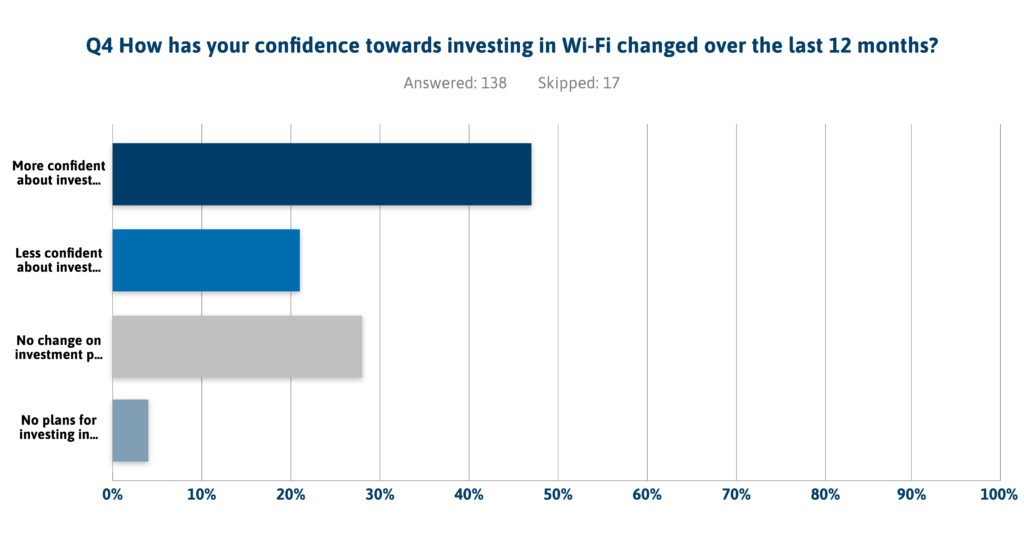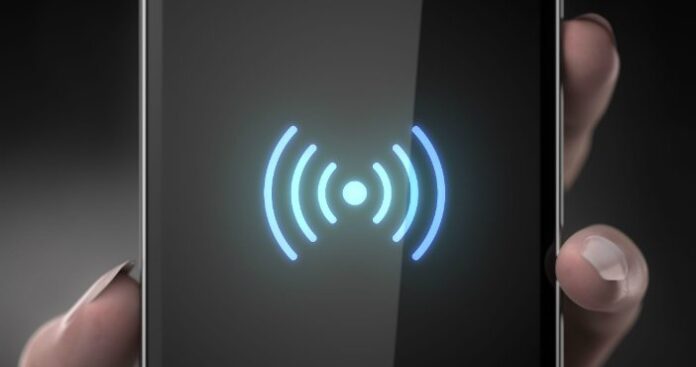The Wireless Broadband Alliance also reported that 53% of respondents have already deployed Wi-Fi 6
In its Annual Industry Report 2023, the Wireless Broadband Alliance (WBA) found that 53% of service providers, technology vendors and enterprises have deployed Wi-Fi 6, and an additional 44% said they are currently working to adopt Wi-Fi 6E in the next 12-18 months. Further, 33% of those respondents confirmed that they already have plans to deploy Wi-Fi 7 by the end of 2024.
“Uptake of Wi-Fi 6E and Wi-Fi 7 is being driven by a growing appetite for data-intensive, low-latency applications and use cases, from smart cities and immersive technologies such as the future metaverse to Industry 4.0.,” said the WBA in a statement. “Newer Wi-Fi technologies offer better scheduling and greater interference management, which respondents to the survey now see as essential in supporting high-quality video, virtual reality (VR), augmented reality (AR) and other advanced consumer experiences.”
In fact, 90% of service providers, equipment manufacturers and enterprises ranked quality of experience (QoE) delivered to end-users as a key differentiator in monetizing their Wi-Fi services, with 61% pointing specifically to the previously mentioned applications as critical revenue opportunities.
What’s so special about Wi-Fi 7?
Wi-Fi 6 introduced OFDMA — a traffic scheduling technique that results in significant speed gains in both crowded and uncrowded environments — and then Wi-Fi 6E added a tremendous amount of capacity. However, quality of service limitations remain, particularly around latency.
This is where Wi-Fi 7 shines — it has the potential improve support for applications that require deterministic latency, high reliability and QoS. This is due in part to what Gabriel Desjardins, director of product marketing in Broadcom’s Wireless Connectivity division, calls Wi-Fi 7’s “marquee” feature. High-band Multi-Link Operation (MLO) is unique to the latest generation of Wi-Fi, and it refers to the use of multi-band/multi-channel aggregation and operation and deliver higher spectrum and power efficiency, better interference mitigations, higher capacity density and higher cost efficiency.
Put simply, MLO allows for “rapid switching between two different Wi-Fi bands,” said Desjardins. If a device connected in the 5 GHz band is suffering from degraded performance due to another device popping up on the network, the MLO function will automatically — and very quickly — switch the first device over to the 6 GHz band.
Other direct enhancements over Wi-Fi 6 include support for up to 30Gbps throughput, roughly three times faster than Wi-Fi 6; 320 MHz transmissions, which is double the 160 MHz of 802.11ax; and the use of higher modulation orders, optionally supporting 4096-QAM, up from 1024-QAM in 802.11ax.

Other key findings: OpenRoaming and convergence
The report also found that WBA OpenRoaming, which uses Passpoint technology to enable seamless and secure Wi-Fi onboarding, reached a milestone of one million hotspots in early 2022. Sixty-two percent of service providers, equipment manufacturers and enterprises worldwide will have already deployed Passpoint/OpenRoaming technology or are planning to do so by the end of 2023, with further 25% expected to deploy the technology by 2025.
Lastly, the WBA highlighted the need for Wi-Fi/5G convergence in order to create “a seamless user experience.” In enterprise markets, 70% of report respondents said Wi-Fi and 5G will coexist, with 61% claiming convergence would support enhanced flexibility for enterprise services. Fifty-three percent said that convergence between licensed and unlicensed technologies was critical or important for the current commercial strategy
“What we’re seeing here is the industry at large identifying increasing value in Wi-Fi technology in the wake of highly anticipated new use cases. What’s more, service providers, equipment manufacturers and enterprises around the world know that those use cases are best served in a converged environment, where Wi-Fi and 5G complement each other,” said Tiago Rodrigues, CEO of the Wireless Broadband Alliance. “Therefore, we’re seeing the industry advance at breakneck pace toward Wi-Fi 7, with mobile operators leveraging Wi-Fi as part of their 5G strategies to maximize coverage and optimize capacity – it’s all about the user experience.”

